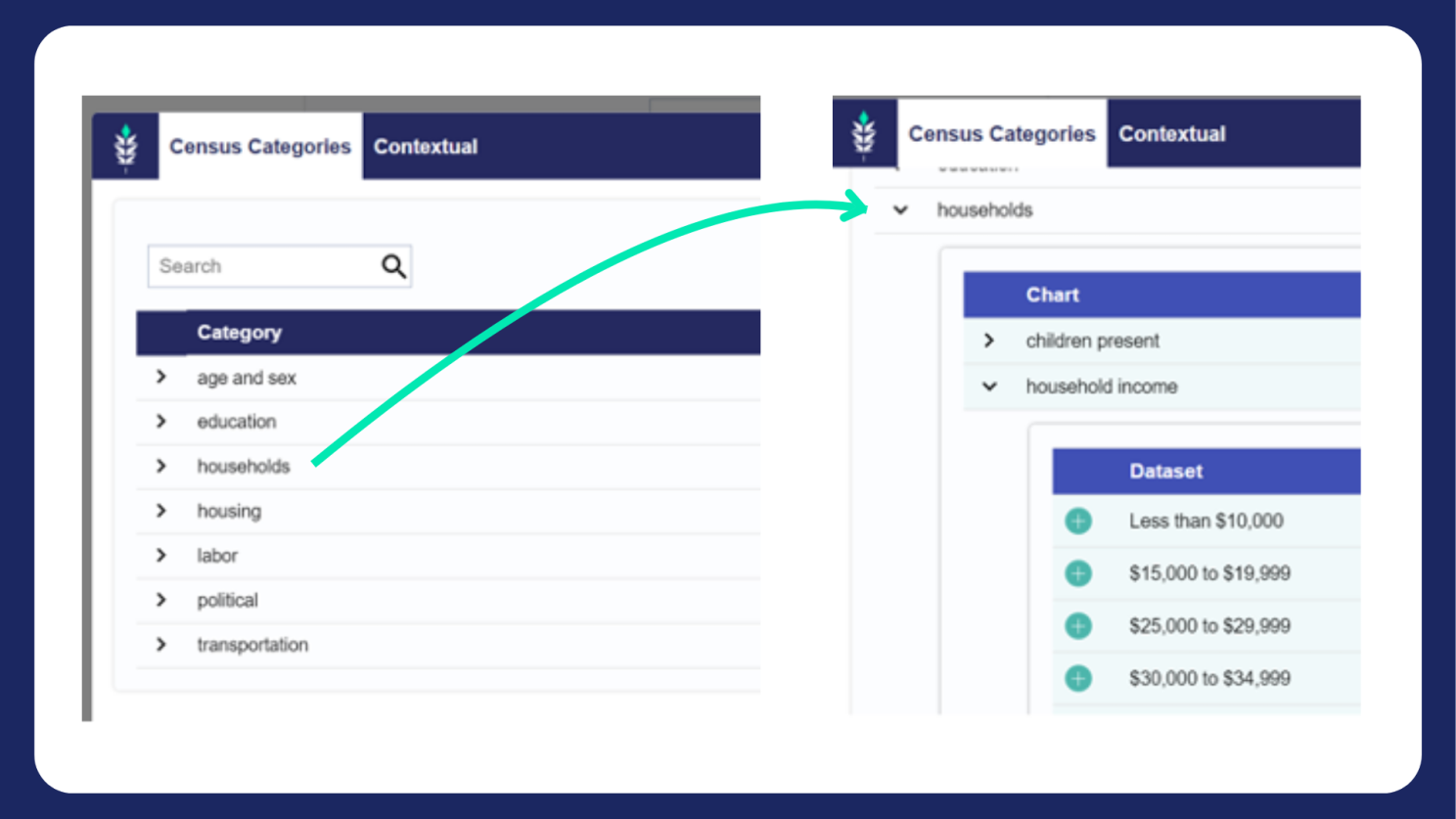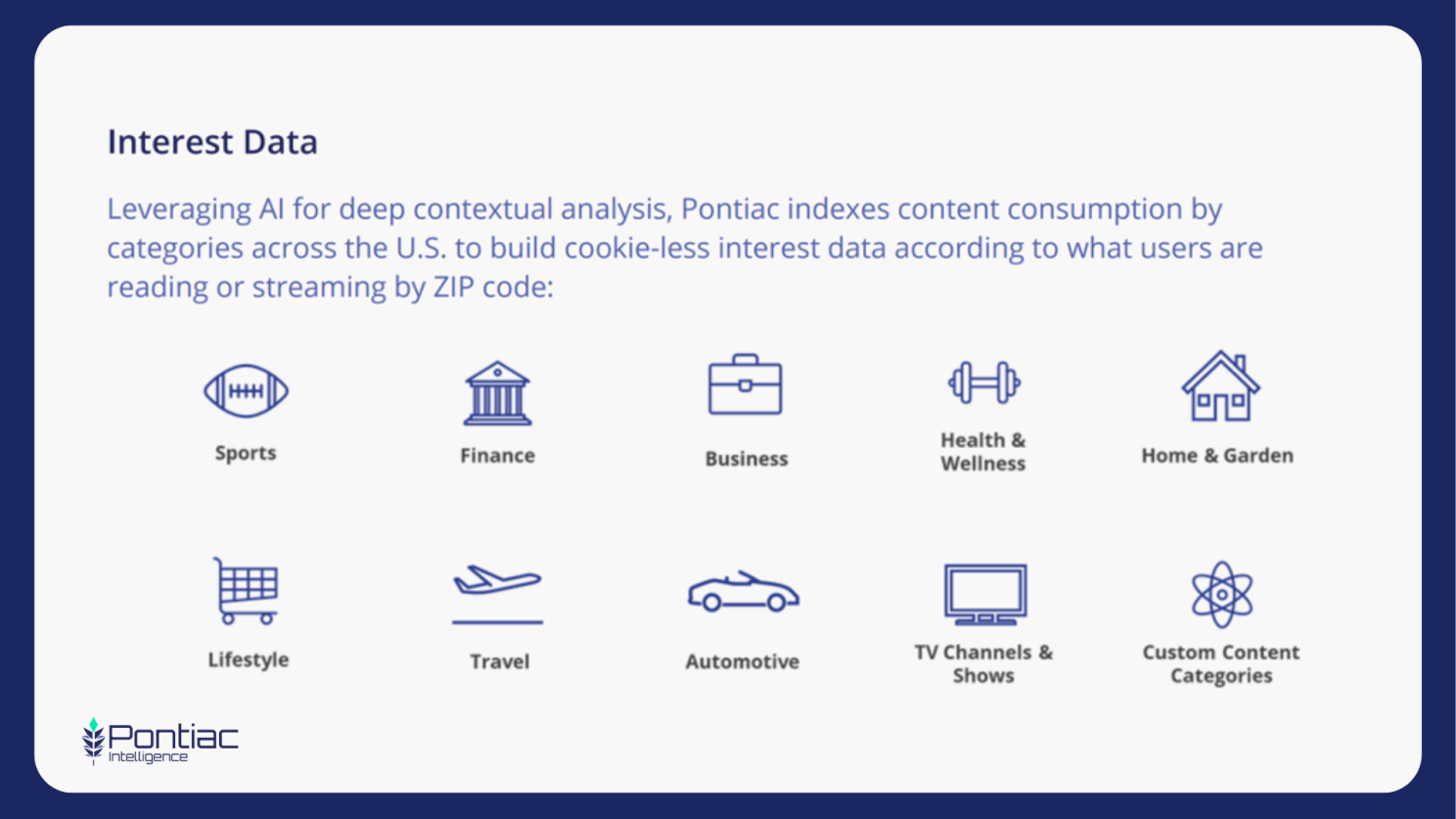While addressable identifiers will continue to dominate current headlines, the ability to determine what user is being targeted in the digital advertising space is clearly diminishing overall. Here at Pontiac Intelligence, we believe this evolution of targeting will clearly showcase other ways to segment reachable audiences. We see it as an opportunity.
One of the key levers to take advantage of the opportunity this industry change is bringing about is geography. There will always be a way to find audiences, based solely on literally where (geographically) the ad is placed. A simple example of this is a static billboard, but more digital examples are IP addresses through CTV or lat/lon via mobile. We are extremely confident that there will be some type of digital identifier that maps to ZIP codes, which can act as a non-individualized marker of audience groupings and characteristics.
At Pontiac Intelligence, we have been working for years in anticipation of the deprecation of 3rd party cookies, and the limited scale of sectioned off UIDs, and have leaned into geography and aggregated audiences at the ZIP code level as a privacy friendly solution. Our aim is to lead the market in modern, privacy friendly audiences at scale. No cookies required.
The Pontiac Audience Research Tool (or Pontiac “ART” for short) is designed to give advertisers a clear and robust understanding of which ZIP codes to reach based on the audiences to which they are looking to market their products.
To begin, we started with the basics: overlaying US Census data across all 42,000+ ZIP codes. Census data is the most current and detailed data mapping demographics and socioeconomics to the US ZIP system. We started by ingesting the census data and breaking up the details into seven categories (Age and Sex, Education, Household, Housing, Labor, Political, Transportation). The output of these characteristic groupings are demographic and socioeconomic audience profiles mapped to ZIP codes.
Note: Language spoken at home is only found on a county level, but we sourced the ZIP codes within the counties and added those in at the ZIP level as well.

Through the development of the ART discovery and segmentation tool, we started to understand different characteristics of each ZIP code. We learned that population is the largest and most dominant variable between ZIP codes. Some are enormous and have thousands and thousands of households, others, only hundreds.
Once we established baseline demographic and socioeconomic profiles, we wanted to overlay interest data. To do this, we built an enhanced first-party pixel that allows us to see the entire URL of each ad which we have placed in our 10 years of media, which is a lot, considering we have represented thousands of advertisers and managed over a quarter-billion dollars in media spend. In aggregate, we have served across hundreds of thousands of websites. We aggregated this URL data, and built a custom AI model using Natural Language Processing to categorize each one as well as enable custom segmentation. With those categories in place, we aggregated the readership data to the ZIP code level to ensure we are privacy compliant. From that, we created simple profiles of interests and readership in each ZIP code.

When set into action, this contextual mapping tool allows our clients to identify which ZIP codes digest the most relevant content for their brand overlayed with key demographic and sociographic data relative to population. With these combined datasets, we believe have the most powerful ZIP code knowledge base for advertising in the industry.
Now, clients can provide basic audience profile data and we can then tell them which ZIP codes are the best to target to reach the desired audience. We can also take web logs to see what ZIP codes those interacting with advertisers’ brands are coming from and use our tool to build a profile of the audience based on ZIP codes and their subsequent profiles. This means we can support audience discovery, research, analysis, and segmentation through our ART tool.
To go even further in helping agencies and brands visualize the audiences, we have built a Chat GPT integration which allows us to produce an AI description of the ‘target audience’ by ingesting the ART output data and porting it to MidJourney to create a true AI based audience image of who the advertiser is trying to reach.
Our aim to drive insights, privacy friendly scale, and performance for our advertising clients. To meet this aim, ART uses privacy friendly data to generate a report with the ideal combination of audience targeting and smarter buying to deliver results:
· ZIP codes to reach your audience.
· An ideal reach and frequency.
· Recommended investment.
Used in its native DSP: Pontiac Intelligence, the ART tool helps guide your investment to ensure you are reaching the right audiences and increasing or decreasing reach and frequency based on ZIP code relevance, normalized based on population baselines to ensure you don’t overinvest only in the high population ZIPs.
We see the end of third-party cookies as an opportunity to evolve, and sometimes the best way to chart the future is to utilize the tools that will stand the test of time. We believe our ART tool is the best solution for identifying and reaching your audience at scale without the need for individual IDs.
Reach out to us to learn more!



